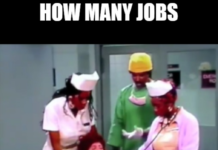By Chabeli Carrazana/Originally published by The 19th
Update: On January 31, the bill passed the House of Representatives with 357 votes in support and 70 against. It now goes to the Senate, where it faces uncertain odds of passage.
Expanded access to the child tax credit could be on the horizon for the country’s lowest-income families through a new bipartisan deal announced Tuesday.
Sen. Ron Wyden, an Oregon Democrat who chairs the Senate Finance Committee, and Rep. Jason T. Smith, a Republican from Missouri who chairs the House Ways and Means Committee, have been working on a deal for months that would redesign the child tax credit to more closely resemble the temporary expansion of the credit in 2021, allowing low-income families to get more tax money back for each child they have. It’s a policy that is wildly popular with voters across party lines and one that lawmakers are trying to get passed before the tax season starts at the end of the month.
The package also includes an increased tax credit for low-income housing development, the restoration of three business tax breaks that expired, tax relief for people in certain disaster areas, and a tax break for Taiwanese workers and businesses in the United States.
About 90 percent of the changes proposed for the child tax credit are aimed at expanding how much low-income families can receive. Middle- and higher-income families would see little change.
The families of about 19 million children under 17 across the country get only a part of the credit or none of it at all because they earn too little. About 80 percent of those — 16 million — would stand to benefit this year if the proposed changes are passed, and about 400,000 would be lifted out of poverty, according to an estimate by the Center on Budget and Policy Priorities, a progressive think tank.
“It’s a big deal to have this opportunity to pass pro-family policy that helps so many kids get ahead,” Wyden said in a statement. Smith added, “American families will benefit from this bipartisan agreement that provides greater tax relief, strengthens Main Street businesses, boosts our competitiveness with China, and creates jobs.”
Children of color, whose parents are overrepresented in low-income jobs, stand to benefit the most from the expansion. More than 1 in 3 Black children and 1 in 3 Latinx children would benefit from the expansion. Many of them are in households headed by women. Women of color make up the majority of the country’s low-paid workforce. More than half of all women of color earn less than $15 an hour, and they’re also more likely to be single heads of households. Black women and Latinas are three times more likely to be single heads of households than White women.
Ailen Arreaza, the executive director of ParentsTogether Action, a national family advocacy group representing more than 3 million parents nationwide, said the expansion of the child tax credit in 2021 was monumental in changing the lives of parents, and particularly low-income families. They reported putting their children in extracurricular activities and not having to choose between paying for rent or groceries.
“That summer — it was just one of the most joyous times for me working at this organization because we heard over and over again from parents saying, ‘This is making such a difference,’” Arreaza said. “Often, we talk about governments and policies [and] it’s hard to sometimes connect them to our daily lives. This is a policy that impacts families’ lives day-to-day.”
What is the current child tax credit?
The way the child tax credit currently works is that families with children under 17 who earn up to $400,000 for joint filers and $200,000 for other filers — essentially middle- and higher-income families — receive up to $2,000 a year in their tax returns for each child.
In 2021, that credit was expanded to give families up to $3,600, much of it in the form of monthly checks, instead of an annual lump sum. The 2021 expansion also made one crucial change: It allowed the poorest families in the country, those who don’t file income taxes, to access the child tax credit for the first time in its 27-year history.
Those pandemic-era changes cut the child poverty rate in 2021 to a historic low of 5.2 percent. But the temporary changes lasted only a year, and an effort by Democrats to make them permanent failed. The tax credit then reverted back to its usual amount — $2,000 — and the child poverty rate rose to 12.4 percent in 2022.
What is being proposed now?
The new proposal, which has drawn support from Republicans, would change the structure of the credit to enhance eligibility for the low-income families who have been shut out of its benefits for years. It’s estimated to cost $33 billion.
First, the proposal would raise the amount of money low-income families can receive. Previously, they were capped at $1,600, while families that earned more money could claim the full $2,000 per child.
Over the next three years, the amount low-income families are eligible for would rise until it hits about $2,000 in 2025. For 2023 taxes (the tax season begins January 29), the amount would rise to $1,800. For 2024, it would be $1,900 and for 2025, it would be $2,000, plus a new adjustment for inflation that is estimated to be an additional $100 in 2025.
Crucially, the current proposal covers changes through 2025, so that would be the only year when low-income families could claim the full $2,000 unless Congress expands the change beyond that date.
The second change would amend a provision on how the credit is phased in that, in practice, has caused low-income families with multiple children to receive the same amount as low-income families with just one child. For example, a family with two children that earns $12,500 a year gets $1,500 in the child tax credit regardless of the number of kids. Under the change, that family would get $3,000 instead — $1,500 for each child, the same way it currently works for middle- and higher-income families.
Still, the new credit would fall short of being “fully refundable,” meaning it would not be automatically available to everyone, even those who earn nothing. Currently, families need to earn at least $2,500 a year to qualify for it. Democrats wanted to remove that floor, which would constitute full refundability, but Republicans have expressed opposition to that, fearing it would disincentivize work.
The new proposal does include one additional change that could help families who fall under that $2,500 threshold, most of them families of color.
Beginning in 2024, families would be allowed to calculate their eligibility using either their current income or their income from the prior year. So if, for example, a parent earned more than $2,500 in 2023 but lost their job in 2024 and fell under $2,500, they could use their 2023 income when filing their taxes that year (unemployment insurance payments do not count as part of a family’s income for the child tax credit). That would allow the country’s poorest families to still get the credit if they experienced a sudden change in employment or left the workforce due to caregiving responsibilities, for example.
What happens next?
Passing the package is the next hurdle. Lawmakers are considering a series of options to pass the package before the end of the month, allowing the benefit to be in place for this tax filing season.
But that road will be challenging, with skepticism from both parties that it can — and should — be done.
Sen. Mike Crapo, the top Republican in the Finance Committee, did not endorse the plan but called it a “starting point.” Sen. Chuck Grassley, the Republican from Iowa, said last week that the chance of getting it passed in January “is pretty nil.”
Rep. Rosa DeLauro, a Democrat from Connecticut who has been the longest-running advocate for the child tax credit in Congress, said she won’t support the deal, calling it a “wholly inadequate” version of what she helped pass in 2021.
“This is unconscionable that they would have traded off families and kids, whether they’re vulnerable, working families, middle-class families, to provide the biggest corporations with billions of dollars in tax cuts,” DeLauro told The 19th.
DeLauro called the success of the child tax credit expansion in 2021 a clear “antidote” to combat child poverty. She wants to see a policy that more closely reflects that expansion and provides full eligibility to even the lowest-paid families in the form of monthly checks that they can access as they need throughout the year.
“Why, then, have we backed off? Providing business with everything they want and kids have to take a backseat and get pennies,” she said.
While it’s clear families are facing “unbelievable economic costs” and need assistance, DeLauro said a package that stacks family’s concerns against business interests is not the answer.
“I’m gonna push like hell to see anything more than get done, but as this is structured I can’t [support it],” she said.
Image: prostooleh/freepik

































